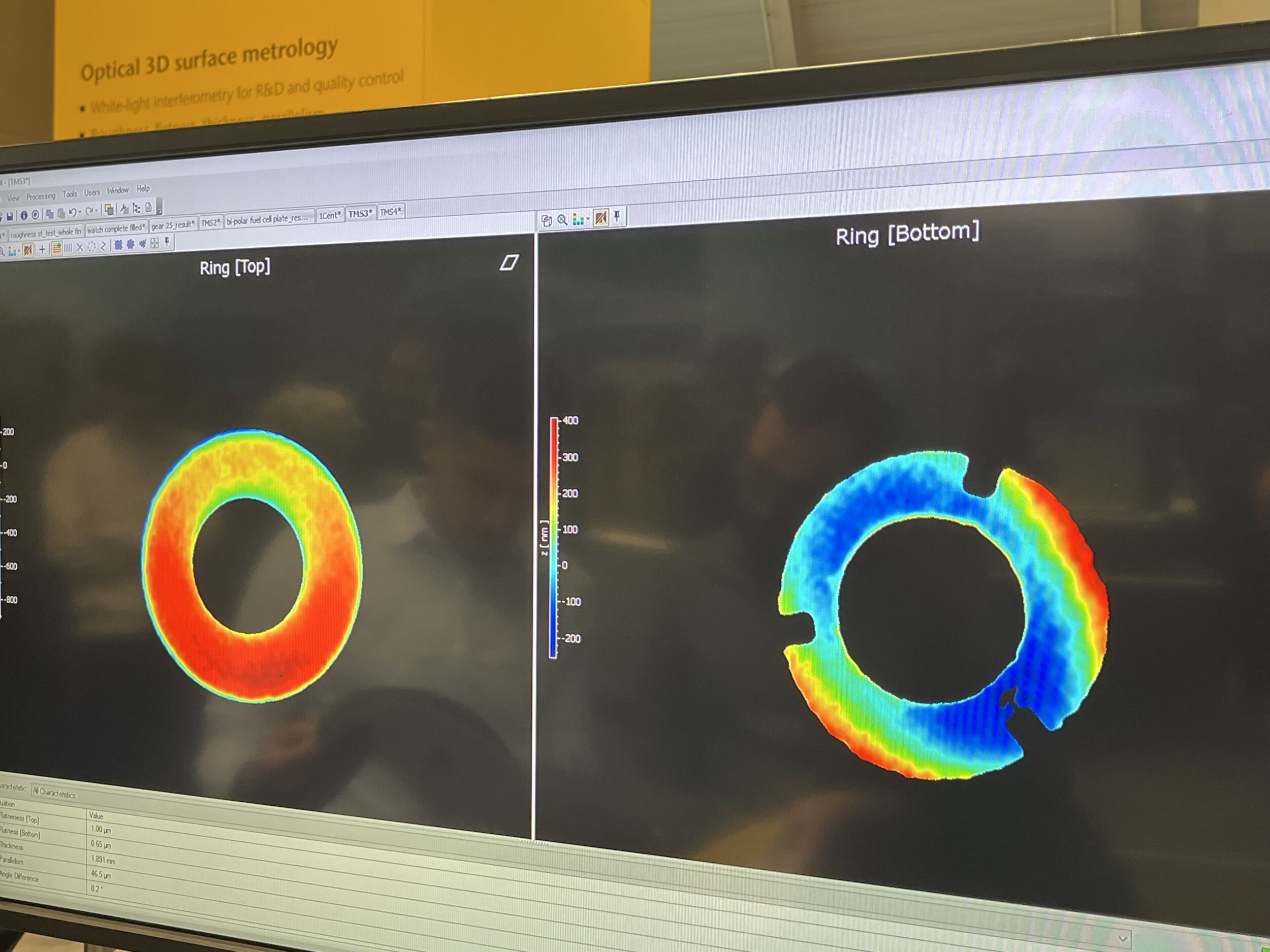
Operations optimization is one of the main market demands in retail. Missed buying opportunities due to slow restocking and the time consuming price tag changing process are two main areas of improvement. Nowadays, the markets‘ staff still needs to ensure that always the right quantities of goods are available for the consumer and that they are sold before the end of their useful life. This requires periodic manual checks on the stores‘ stocks, evaluation and reassessing the condition of perishable products on the shelves and their correct pricing.

Recognizing products on the shelf
In a real life supermarket of a major retailer in Europe, however, things are now handled different. Here, the fresh food shelves never get empty for no reason as they are being observed by cameras. Aiming to disburden personnel and further improving restocking as well as price tagging, the leading European supermarket chain implemented an AI-driven solution which was jointly developed by Macnica and Asus IoT for the specific needs of supermarkets. The system recognizes the products on the shelf, its level of stock and automatically updates the price tags under the products. Shelf Compliance – Smart Replenishment & ESL Solutions is the working title of the project which was tested several months under real conditions and has now been carried out successfully. „Relying on an intelligent solution for stock in markets and supermarkets is one of the main points to achieve success in this sector. Our solution is able to recognize the products with computer vision and display the stock results on a dashboard, for management to better make data-driven decisions“, explains Silvia Kuo, Business Development Director at Asus IoT.
Fill level monitoring
The entire solution is a cooperation between Macnica and Asus. The hardware which in the current version is an EBE-4U Edge Computer; the API software and the AI engine are coming from Asus. Macnica contributes the front end interface with the user as well as important back end functions for labeling and capturing photos and to provide anonymization on data. All the images taken by the cameras are anonymized and treated to provide the detection of the QR codes for each product of the Electronic Shelf Label, and then the collected images are being sent to the Asus API for continuous recognition of the items and the actual fill level.
Store management on the dashboard can determine regions of interest for each of the stock monitoring camera units. It is possible to define a fill level limit for each perishable product shelf without barcode. „For this, certain parameters are considered, such as: size and average daily sales quantity. In addition, it is also possible to define which specific levels should generate replenishment alerts for certain products. For example: the threshold level for watermelons can be quite different from the one for bananas“, describes Silvia Kuo from Asus IoT. For the fresh food area in the supermarket, data collection to train the AI engine started with picture acquisition for display box detection training taken out by Asus. Macnica then integrated the box detection model into the system. This was followed by the on-site master data collection of the target products in different lighting conditions and using the retail customers´ labeling. With that data Asus developed the pre-trained model and enrollment API which was integrated into the Macnica module and further improved in accuracy.
Tracking the turnover ratio of fruits
For the supermarket chain, fresh foods are of particular interest as they tend to spoil and become waste if they are not recurrently bought. Tracking the turnover ratio over time of each fruit and vegetable promises valuable data for the supermarket to improve order cycles, but also to draw conclusions at what season, whether, and time of month a product is sold better. Computer vision and AI allows the supermarket to implement actions to avoid lost sales due to excess or lack of stock. The assertiveness of decisions increases because they are based on solid data, without the need for manual inspection of the shelves. Another advantage of the intelligent solution is that it always identifies when a shelf is filled with a different product. The camera-based AI system automatically identifies the new product and modifies the product description and its value on the respective electronic label.
With the entire project being developed in close cooperation with the retail customer in a live setting, a clear focus was put on feasibility and practicability aligned with the expectations of the market. „We can prove how efficient the system is. We use off-the-shelf cameras and are able to process many cameras in one server. This allows us to provide a cost model that produces direct advantage over manual labor“ explains Fábio Petrassem de Sousa, Director of the Technology Solutions Division at Macnica ATD Europe. „To top it off, these solutions are easy to implement in any environment. Configuration to customer-specific requirements takes only a short time.“ As to costs, the system is a subscription based solution with the advantage of being adaptable to the size of each individual store. So it can be scalable and accessible to different sizes of retailers. De Sousa is certain that the added value through analysis of the collected data makes a significant contribution to increased profitability as it can be used for optimization of the product offering, reducing waste and efficient promotions. „The partnership between Macnica and Asus IoT is a perfect example of development and application of cutting-edge technology to impact various sectors of the economy, here in particular the retail business,“ highlights Fábio Petrassem de Sousa. With the success of system in the fruit and vegetable area, Macnica and Asus are motivated to expand the functionality into other product categories. Onboarding new products which are more durable; packed and displayed in vertical shelves are currently under development.












